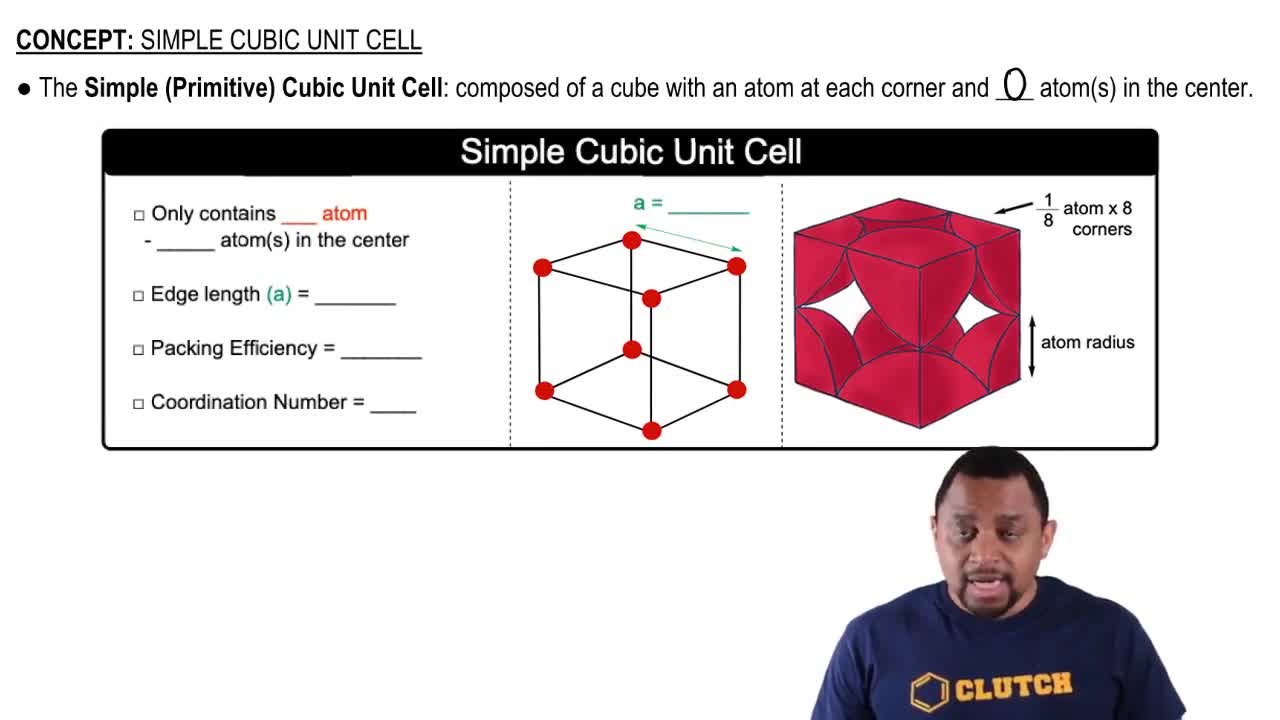Here are the essential concepts you must grasp in order to answer the question correctly.
Unit Cell
A unit cell is the smallest repeating unit in a crystal lattice that reflects the overall symmetry and structure of the entire crystal. In the case of sodium oxide (Na2O), the cubic unit cell contains a specific arrangement of sodium (Na) and oxygen (O) atoms, which is crucial for calculating properties like density. Understanding the unit cell helps in visualizing how atoms are packed in a solid.
Recommended video:
Density Calculation
Density is defined as mass per unit volume and is a key property of materials. To calculate the density of Na2O, one must determine the mass of the formula unit and the volume of the unit cell. The formula for density is given by ρ = mass/volume, where the mass can be derived from the molar mass of Na2O and the volume is calculated from the edge length of the cubic unit cell.
Recommended video:
Molar Mass
Molar mass is the mass of one mole of a substance, typically expressed in grams per mole (g/mol). For sodium oxide (Na2O), the molar mass is calculated by summing the atomic masses of its constituent elements: sodium (Na) and oxygen (O). This value is essential for determining the mass of the Na2O present in the unit cell, which is necessary for the density calculation.
Recommended video:





